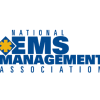Updated June 2015
A supervisor of a small EMS agency recently told me with some pride of his chief’s willingness and skill in serving as a coach and mentor for employees at all levels of their organization. “His effort has been crucial for us to retain talent and respond to change,” he said.
I’ve personally known the chief for many years, and to his credit this charismatic but often impatient man has recognized that the diplomacy, empathy and consideration of others’ feelings required of relationship-building doesn’t come naturally to him—but he’s made it his goal to get better at it. And, sure enough, adding the coaching dimension and using it to build relationships helped the agency move from a fragile organization to one that is widely considered as being agile and progressive.
What are the leadership capabilities and skills required for organizational agility? Relationship-building (sometimes called “emotional intelligence”) is just one of many. While most leadership competency models include dozens of individual competencies, organizational development expert Bruce Griffiths has identified the “Big Six” that are absolutely essential. In a series that appeared in Best Practices in 2010, Griffiths wrote about his research into this area working with more than 70 organizations of all shapes and sizes. Here are his Big Six competencies, all shared by exceptional leaders:
- Relationship-building/sensitivity (emotional intelligence)
- Problem-solving/decision-making (creative analysis and good judgment)
- Influence (accumulation and skillful use of power)
- Drive/energy (passion to perform)
- Organizing and planning (being efficient and focusing on the right thing)
- Communication (clear, frequent information in the right medium)
Since the leadership capabilities and skills required for agile organizations parallel the Big Six, let’s look more closely at these competencies as they apply to the four dimensions of organizational agility.
Awareness and alertness
The world is becoming smaller, more interconnected and faster, resulting in the need for organizations to have managers with both divergent and convergent powers for analysis and decision-making, a Big Six competency. Divergent thinking is an ability to look beyond the conventional assumptions and paradigms that can blind leaders to deeper truth and trends that may not initially be obvious.
In the recent financial crisis, divergent thinkers quickly became aware that issues of smaller subsidies and service cuts were not simply a matter of “waiting it out” with incremental changes. Rather, they took action to proactively manage a sea change in how services were provided and paid for. Once all the options are laid out, agile organizations then display convergent thinking—they not only know how to make a decision, but they know how to sell and implement the decision relatively quickly. This can involve some risk, but agile organizations weigh that against the very real harm of inaction or waffling.
Leadership orientation
Like many services, the agency I spoke of earlier is experiencing change on multiple levels. Costs are increasing while reimbursement declines; competitors are encroaching on their service area while quality and accountable care components are becoming more challenging. Common sense would seem to dictate the extreme importance of competent leadership, especially in these turbulent times … but how often have you seen agencies skimp in the selection process or in leadership development?
Agile organizations assess current and future leaders against the Big Six competencies, hiring and promoting those who show potential and also providing resources for professional development in areas where leaders may fall short.
Agile leaders are constantly looking at ways to improve themselves, seeking honest feedback and even looking outside their direct experience in EMS to other professions for ideas and help. Agile leaders are particularly good at communication and understand how important clarity is around mission, roles and values—no matter the medium selected or how formal or informal the communication.
I’ve observed a direct correlation between an organization’s agility and its leaders’ understanding and demonstration of the Big Six behavioral competencies.
High-value processes and structures
As Griffiths says, time is a leader’s most precious resource. The Big Six competency of organization and planning translates to efficient systems and processes in which delegation is used wisely.
Forward-thinking leaders ask employees to consistently find better ways to do their work. This means staff are motivated and rewarded for finding ways to serve customers better, make improvements in operations and come up with ideas that will save time and resources. Agile organizations then institutionalize these best practices through systems and processes that ensure they’re not solely dependent on one individual’s passion, but can be duplicated throughout the organization.
Development of a performance-based culture
The Big Six are leadership touchstones that are integral to creating a performance-based culture, one in which success is determined by measurable objectives as a reflection of the organization’s values and priorities. Performance accountability on projects and tasks at all levels of the organization is a critical characteristic of agile organizations. And remember—it’s the vision and values that guide decisions and priorities.
In Connecting the Dots: Aligning Projects with Objectives in Unpredictable Times, Harvard Business School professor Warren McFarlan and consultant Cathleen Benko suggest that an organization’s project portfolio should be like geese flying in formation—that is, in perfect alignment to get maximum results and the least amount of turbulence. Fragile EMS organizations evoke the image of driving in a cross-country demolition derby rather than of graceful birds flying smoothly in formation.


